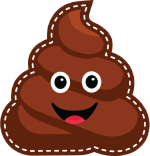The 2017 IDWeek conference in San Diego featured a number of noteworthy C. difficile studies in the poster hall. We summarized just a few below for your reading pleasure:
Clinical Correlation of a Clostridium difficile Testing Algorithm Reflexing PCR Positive Specimens to Toxin Enzyme Immunoassay (EIA) (Cleveland Clinic)
- 73% of cases classified as clinically significant C. difficile infections (CDI) were negative using a toxin EIA test
- A GDH antigen test produced false-negative results for 6.8% of patients with clinically significant C. difficile infections (CDI), all of whom tested positive by PCR
- The authors concluded that toxin results in PCR-positive patients did not correlate with disease assessment (i.e., patients with clinical signs of CDI according to physicians blinded to the PCR results were neither more nor less likely to have a positive toxin EIA result)
Decrease of Hospital-Onset Clostridium difficile through Enhanced Electronic Decision Support (Northwestern)
- Inappropriate testing* accounted for 50% of CDI LabID events prior to the implementation
- The hospital reduced its peak SIR of 2.567 to 0.356 through targeted education and order entry decision support
Clostridium difficile Laboratory Identification Event Reporting: A Need for Diagnostic Stewardship (Johns Hopkins)
- Almost half of hospital onset CDI LabID events were not true hospital onset infections, but rather inappropriate* or delayed testing
- Diagnostic stewardship is an essential part of antibiotic stewardship, infection prevention, and therapeutic decision-making, which can include electronic medical record best practice alerts to prevent ordering tests for patients without clinically significant diarrhea
- Facilities seeking to improve reported hospital onset CDI LabID need to understand what proportion of their LabID events represent true infections and what proportion represent inappropriate testing
* Inappropriate testing defined as testing specimens that did not meet the lab’s inclusion criteria (e.g., formed stool, patient on laxatives, etc.) or waiting until day 4 or later to test patients who had symptoms on days 0-3)
1. Buenos Rios M et al. Clinical Correlation of a Clostridium difficile Testing Algorithm Reflexing PCR Positive Specimens to Toxin Enzyme Immunoassay (EIA). Poster presented at IDWeek; 2017 Oct 4-8; San Diego, CA
2. Donatoni G et al. Decrease of Hospital-Onset Clostridium difficile through Enhanced Electronic Decision Support. Poster presented at IDWeek; 2017 Oct 4-8; San Diego, CA
3. Rock C et al. Clostridium difficile Laboratory Identification Event Reporting: A Need for Diagnostics. Poster presented at IDWeek; 2017 Oct 4-8; San Diego, CA
 .
.